Silicone contamination and powder coating - they do not mix!
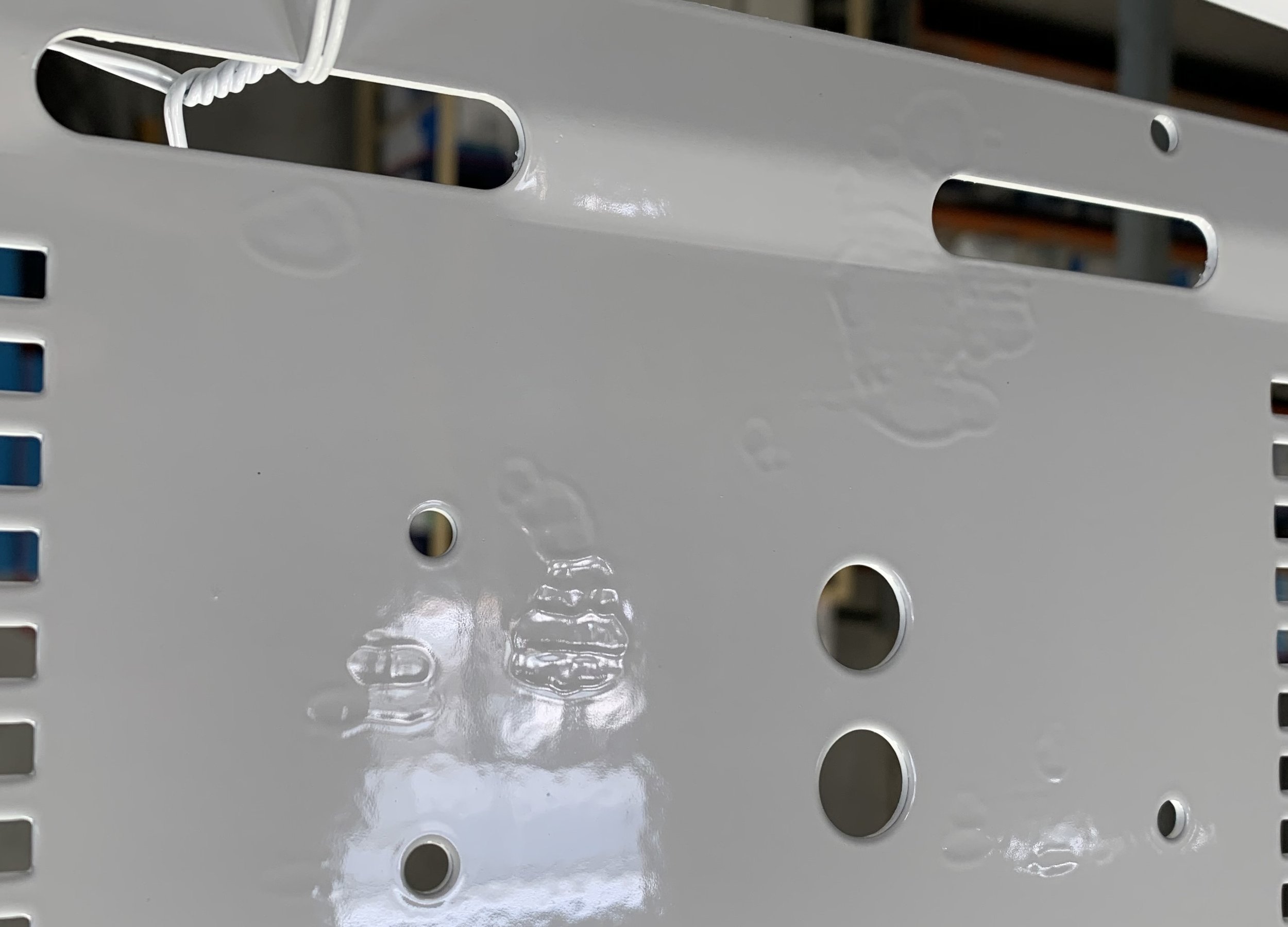
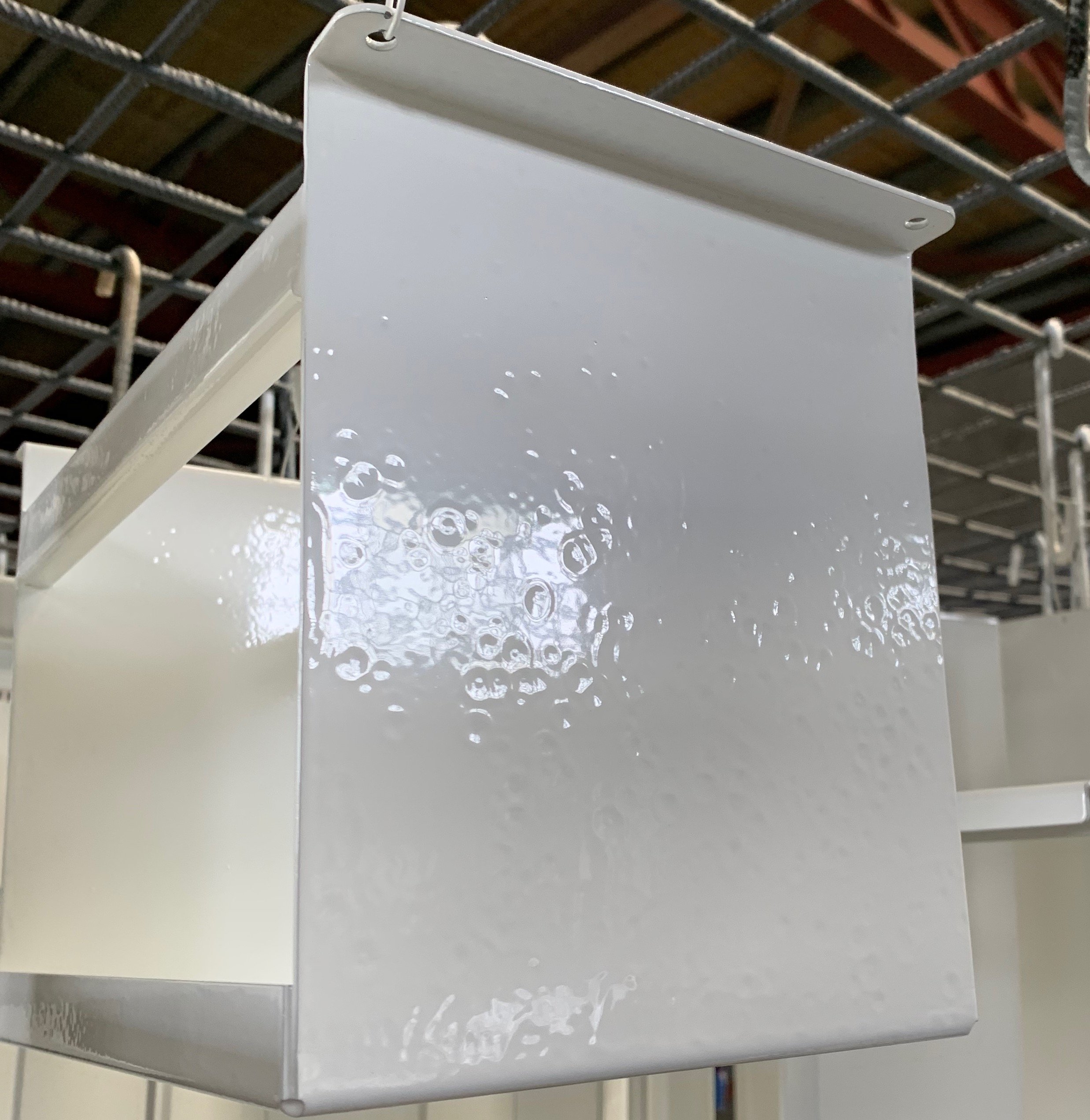
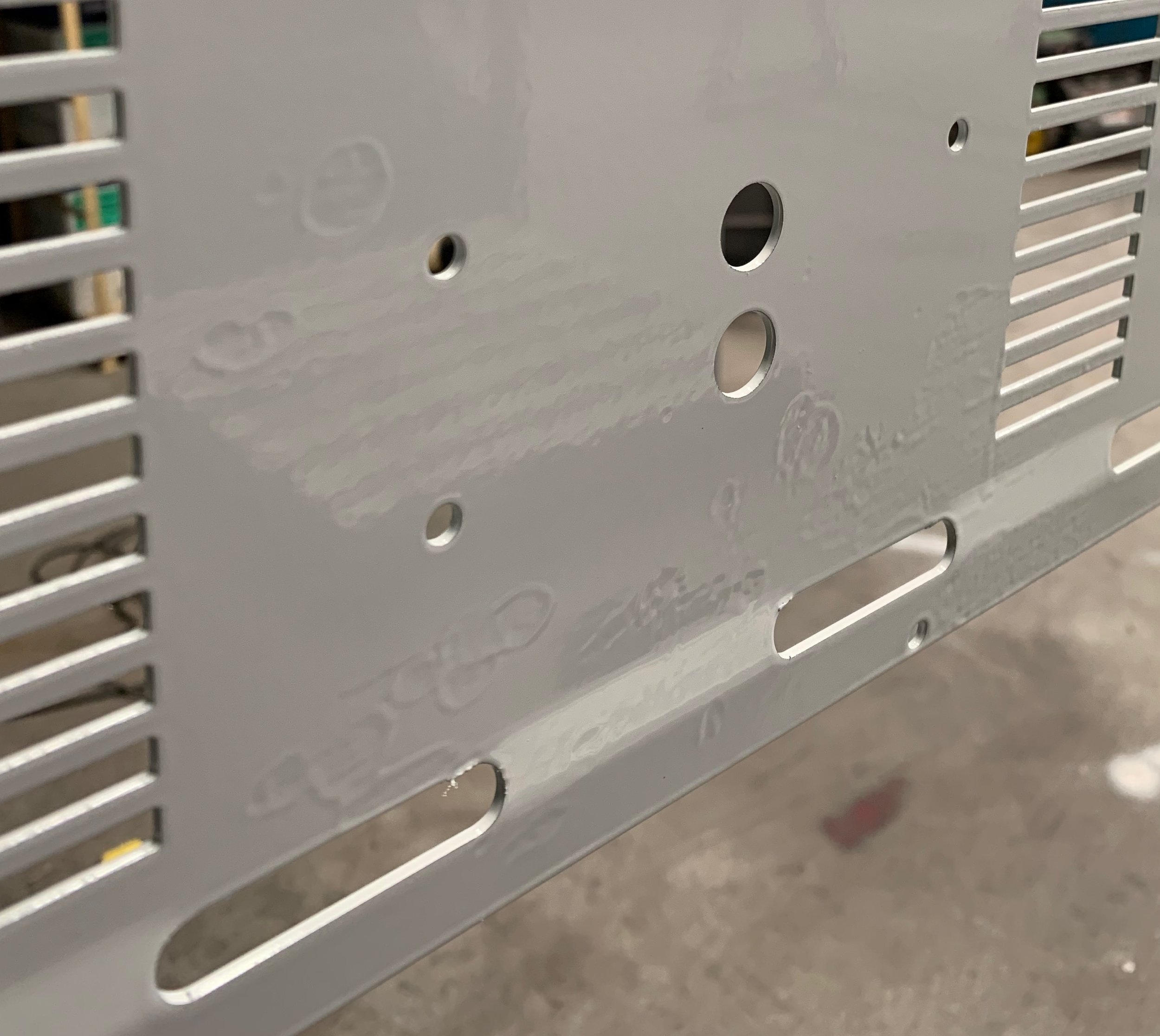
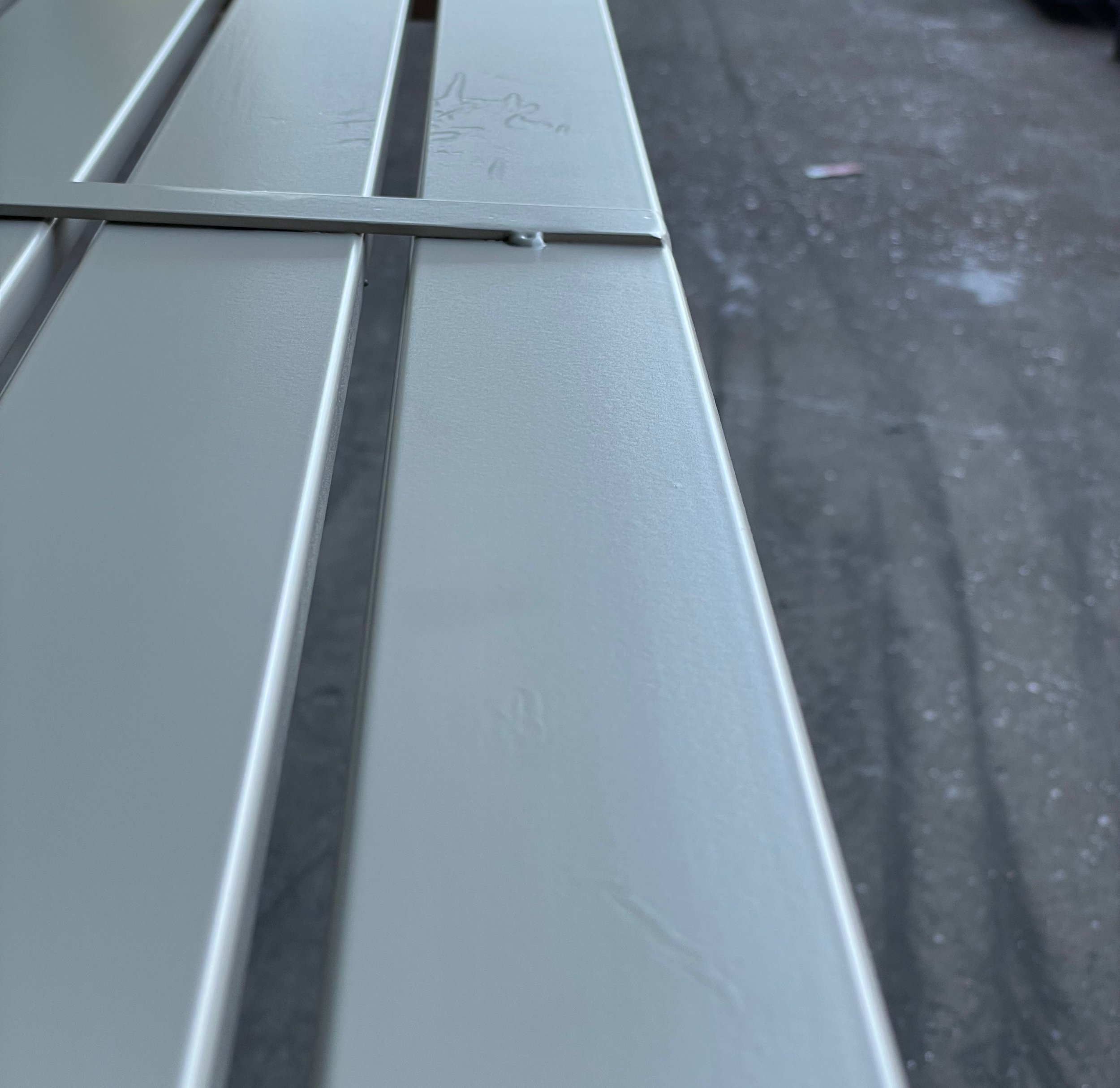
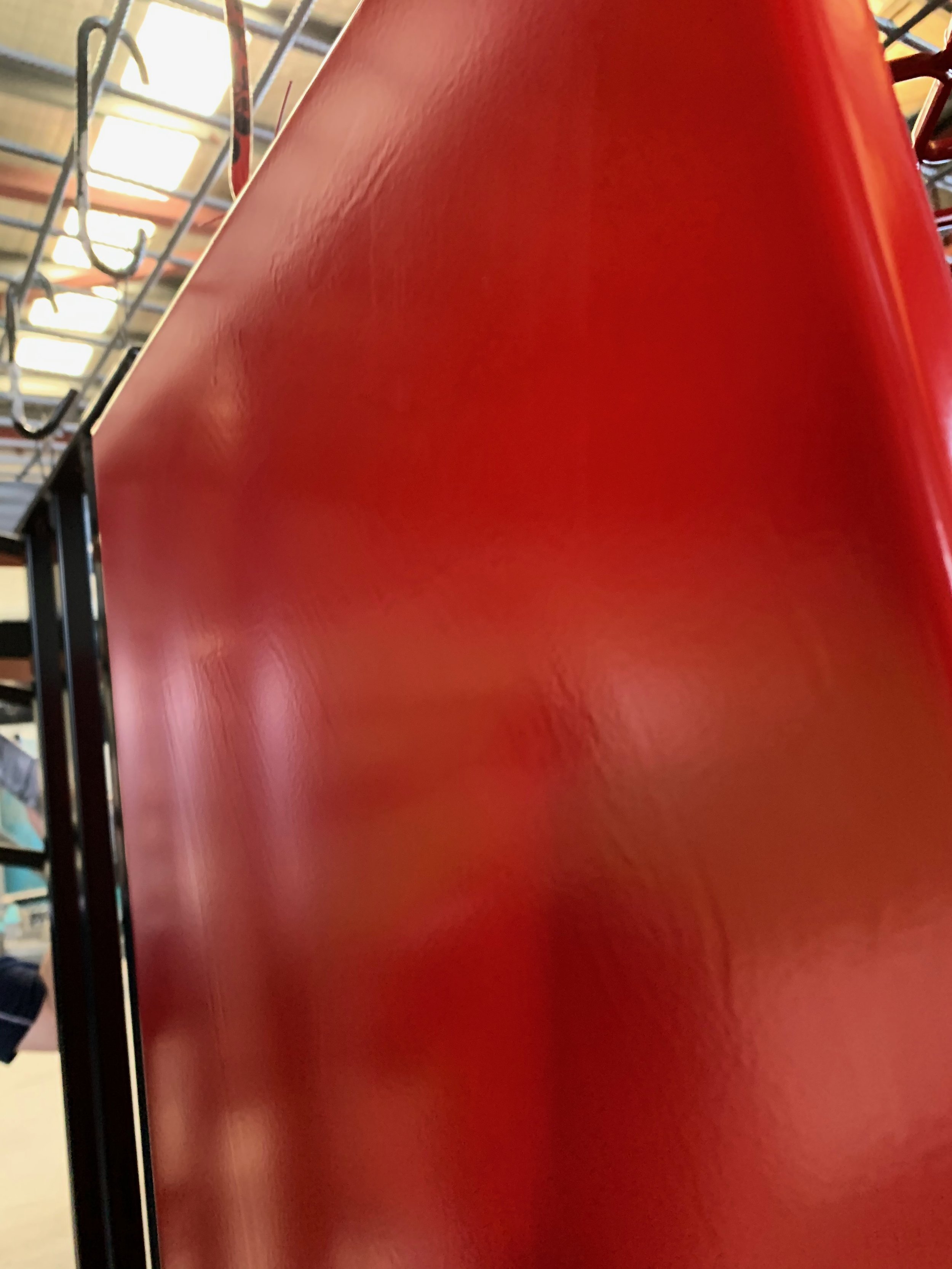
Serious cratering or ‘fish eyes’ in powder coated finishes can occur from just a tiny concentration of silicone-based contaminant. Laboratory studies have shown that concentrations of silicone-based products as low as 0.001% can cause widespread cratering or ‘fish eye’ defects in the finish.
These defects occur due to a large difference in surface tension between the melted film of a powder coated finish and silicon based paint or other contaminant. The surface tension of silicone-based paints is typically measured at 15 to 20 dynes per centimeter. The surface tension of powder coatings is typically 40 to 50 dynes per centimeter. This is a large enough discrepancy to cause craters to form when a region of very low surface tension contaminant resides within the melted film of a powder coating.
In many circumstances where silicone contamination defects occur in powder coating, it is due to surface contamination of the product substrate. Sources of contamination include products such as sealant and caulking materials, glues, mould release agents, de-foamers used in rolling or forming oils, coolants, hard surface cleaners, water displacing lubricants, personal care products like skin creams, hair conditions, and lotions and many other common products. e.g. WD40, RP7, silicone sprays, Armour-all, silicone paint etc.
An example of a silicone contamination can be caused by silicone sealant that leaves silicone residues on a surface. As the sealant is applied, the applicator touches the wet sealant and leaves residues on any other surface he or she touches. Of most concern though are aerosols of silicone where a product is sprayed into a fine mist. Aerosols carried by the wind can travel long distances and cause silicone contamination across a wide area by depositing itself on the surface of parts before (or during) the powder coating process.
Silicone contamination is difficult to completely remove due to the minute concentrations of silicone that can wreak havoc on a powder finish. Remediation of silicone contamination requires exhaustive measures and therefore silicone contamination should be avoided and eliminated from the manufacturing, storage and transport processes for materials to be powder coated. Diligent root cause analysis should occur when silicone contamination occurs in order to identify and eliminate the source of any silicone contamination.
Silicone contamination is a very serious problem for powder coating - powder coating and silicone contamination not mix!
